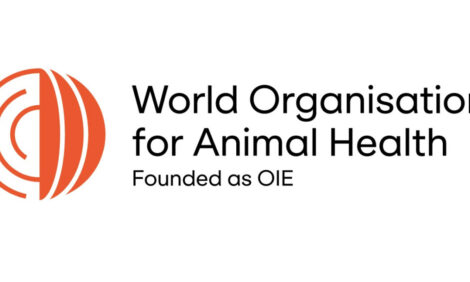



Weak Economy, Strong Meat and Livestock Markets
US - For the last couple of weeks, the economic news has been almost uniformly depressing. The employment situation remains rather bleak – with initial jobless claims hitting a nine-month high just two weeks ago, write John Michael Riley from the Department of Agricultural Economics, Mississippi State University and John D. Anderson, Livestock Economist with the American Farm Bureau Federation.Last week, the government’s estimate of second quarter GDP growth was revised down to 1.6 percent from an initial estimate of 2.4 percent. While this was a little bit less of a downward revision than the consensus estimate, it clearly points to a slowing general economy. The revision to the second quarter GDP estimate came on the same day as the release of the University of Michigan consumer sentiment index for August, which at 68.9 was well below the expected level of 70. Finally, though Ben Bernanke was able to talk the stock market into a decent rally on Friday, the Dow Jones Industrial Average (DJIA) has lost over 500 points since its most recent high of just under 10,700 on August 9.
In light of the gloom hanging over the general economy, the performance of meat and livestock markets is remarkable. Last week, the daily Choice boxed beef cutout value climbed to just over $164/cwt, its highest level since late-May. The pork cutout posted its highest value ever last week – $96.74/cwt on Tuesday – before fading into the still-very-respectable low-$90s to end the week. On the live animal side, fed cattle prices last week continued to hold at just a shade under $100 for the second week. Barrow and gilt prices (national average base) declined a bit from the prior week but held near the $80 mark, posting a strong finish to what has been a very good August market.
Of course, the supply side of the market has been and remains supportive of prices. Historically low cattle numbers have been frequently noted and commented upon in this space. In fact, the supply side of the market almost certainly deserves the lion’s share of the credit for this summer’s price strength. The Livestock Slaughter report from two weeks ago indicated a 2.2 percent cumulative (January – July) drop in total red meat production compared with last year. Stocks of meat have been drawn down as well, with this month’s Cold Storage report noting that frozen stores of red meat as of July 31 were down 20 percent from the prior year.
The demand side of the market has not been without some bright spots, though; and it is unlikely that cattle and hog markets would be where they are now without some pull from the demand side. On that score, meat exports have been encouraging. In the August World Agricultural Supply and Demand Estimates (WASDE) report, USDA raised their projections for 2010 exports for beef, pork, and poultry substantially. The revision was noted to reflect better than expected recent sales to a number of foreign markets. For 2010, USDA now projects a 13 percent year-over-year increase in beef exports and a 9 percent year-over-year increase in pork exports. While domestic demand will clearly have the greatest influence on the direction of the market moving forward (especially for beef since exports account for a much smaller share of production than for pork), foreign demand has provided a helpful boost to the market this summer and has helped to put livestock markets into a much better-than-expected position headed into fall.
Cash fed cattle prices ranged from $99.50 live/$157 dressed in the South to $97live/$155 dressed in Iowa/Minnesota. The 5-area average live price worked out to $98.97, up 32 cents from the prior week. Wholesale beef prices moved steadily higher through Thursday last week before fading just a bit on Friday. The Choice cutout ended the week at $163.86 on Friday (up $2.09 from the preceding Friday), and the Select cutout ended at $157.56 (up $2.93). Spot beef sales were, as they have been in recently, very light. The calf market made a strong showing last week. At Oklahoma City, feeder steers and heifers were called steady to $3 higher. Stocker steers were $2 to $5 higher; and stocker heifers were steady to $2 higher. Corn futures started the week sharply lower but then steadily gained ground throughout the week. The nearby (Sep) contract closed on Friday at $4.21 – unchanged for the week after trading as low as $4.00 on Tuesday. Cash corn prices were higher in most feeding regions. Omaha corn rose 7 cents from the prior week, averaging $3.77/bushel last week. Texas Triangle corn added 3 cents last week, averaging $4.14/bushel.
| Cattle or Meat Category | Week of 8/27/10 |
Week of 08/20/10 |
Week of 08/28/09 |
% Chg Prev. Week |
% Chg Prev. Year |
Chg Prev. Week |
|
|---|---|---|---|---|---|---|---|
| 5-Area Fed Steer Price | all grades, live weight, $/cwt all grades, dressed weight $/cwt |
$98.97 $154.88 |
$98.65 $154.55 |
$84.41 $131.67 |
0% 0% |
17% 18% |
$0.32 $0.33 |
| Boxed Beef | Choice Price, 600-900 lb., $/cwt Choice-Select Spread, $/cwt |
$163.79 $6.49 |
$158.48 $7.22 |
$143.67 $7.26 |
3% -10% |
14% -11% |
$5.31 ($0.72) |
| 700-800 lb. Feeder Steer Price | Montana 3-market average, $/cwt Nebraska 7-market average, $/cwt Oklahoma 8-market average, $/cwt |
$125.25 $118.01 $116.55 |
$113.24 $120.54 $115.19 |
$97.23 $103.64 $100.62 |
11% -2% 1% |
29% 14% 16% |
$12.02 ($2.53) $1.36 |
| 500-600 lb. Feeder Steer Price | Montana 3-market average, $/cwt Nebraska 7-market average, $/cwt Oklahoma 8-market average, $/cwt |
$132.12 $134.69 $123.13 |
$130.00 $133.00 $120.59 |
$101.00 $117.76 $109.01 |
2% 1% 2% |
31% 14% 13% |
$2.12 $1.69 $2.55 |
| Feed Grains | Corn, Omaha, NE, $/bu (Thursday) DDGS Price, Nebraska, $/ton WDGS Price, Nebraska, $/ton |
$3.77 $100.70 $33.50 |
$3.70 $98.50 $32.50 |
$3.15 $82.50 $35.08 |
2% 2% 3% |
20% 22% -5% |
$0.06 $2.20 $1.00 |


